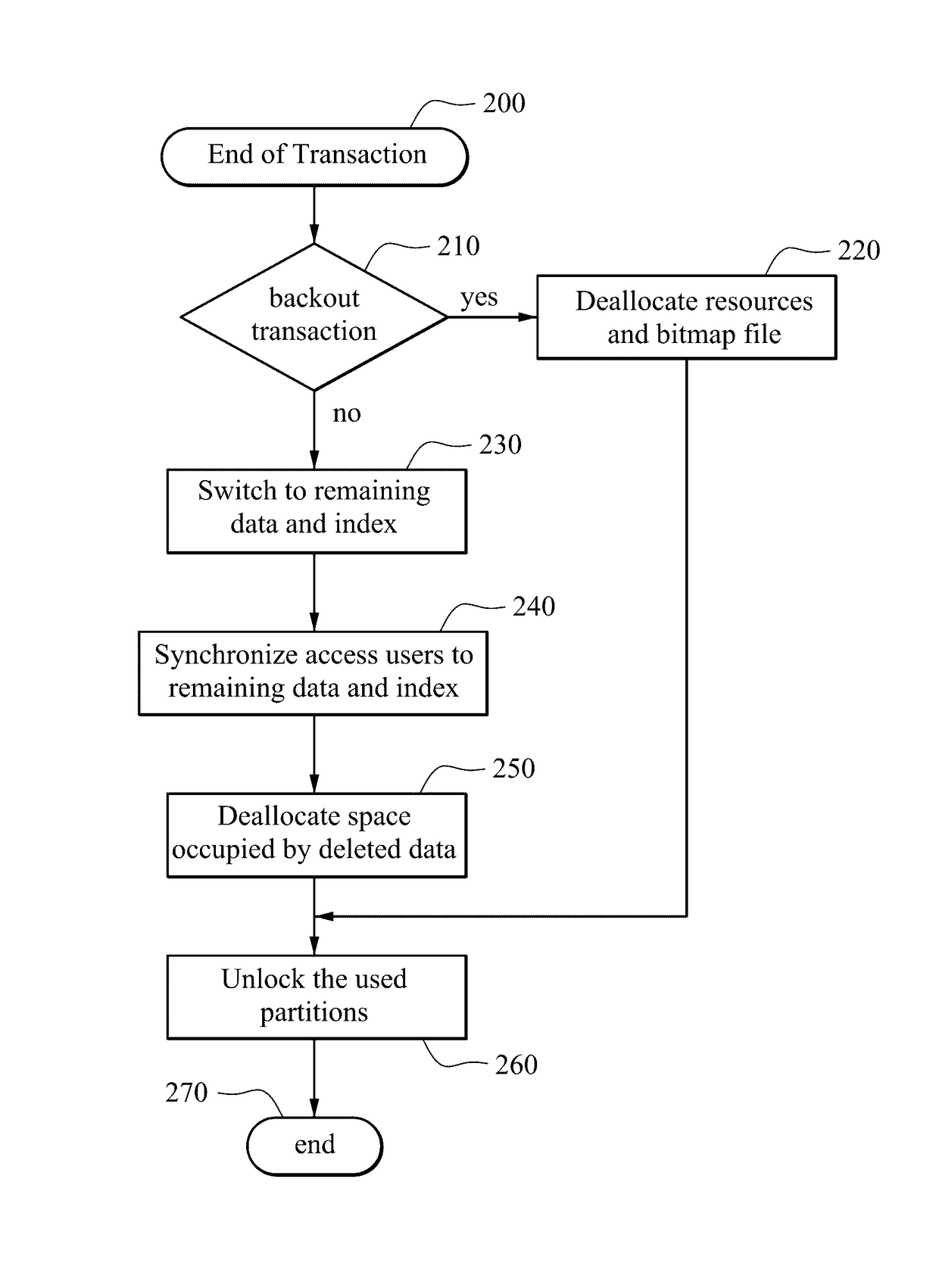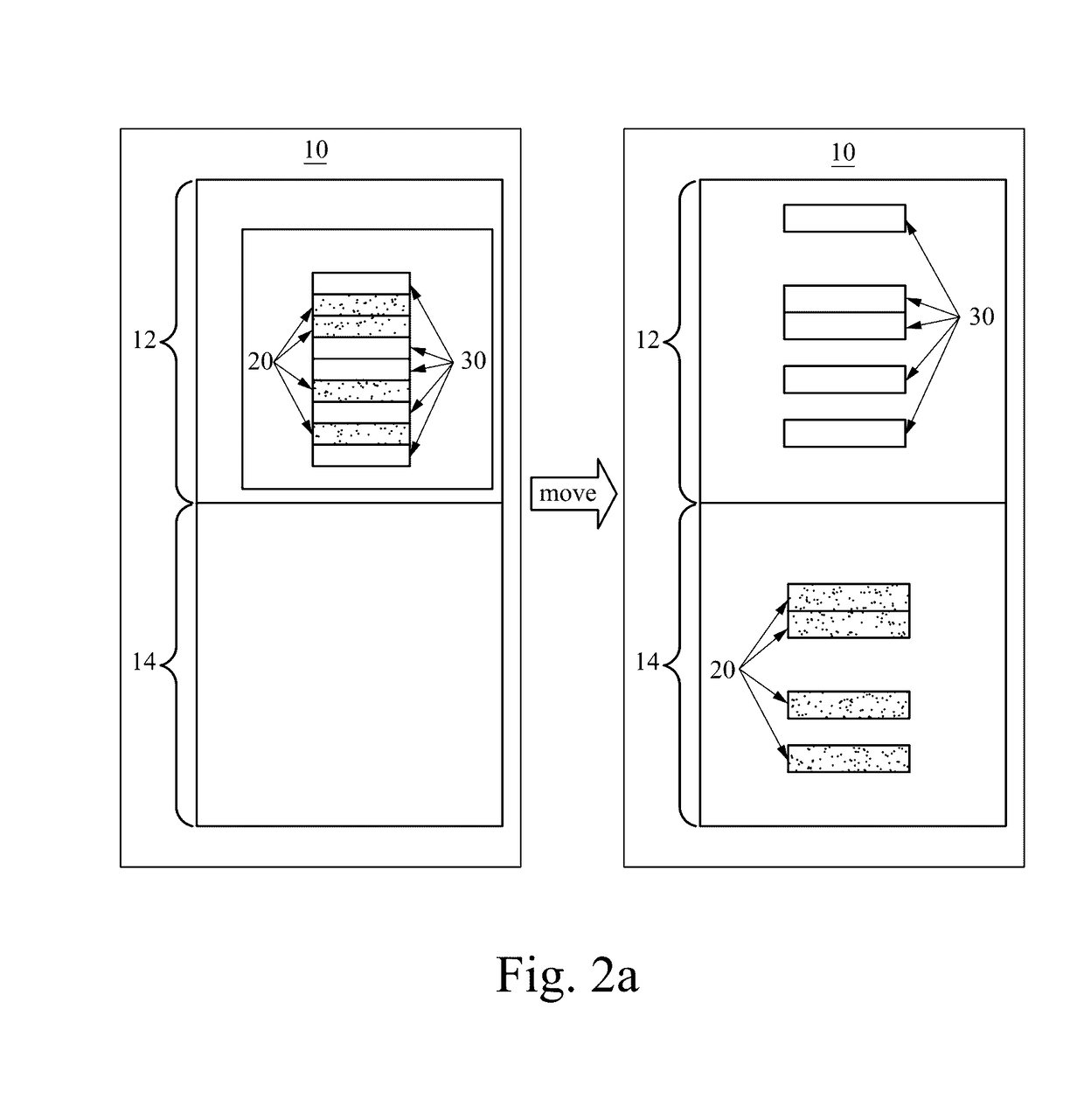Method for mass-deleting data records of a database system
a database system and data record technology, applied in the field of mass deletion of data records of a database system, can solve the problems of transaction timeout, huge amount of transaction log data produced by deletion, and ineffective exclusion of the risk of a transaction log overflow, so as to improve the availability and reliability of the database system, and less processing time
- Summary
- Abstract
- Description
- Claims
- Application Information
AI Technical Summary
Benefits of technology
Problems solved by technology
Method used
Image
Examples
Embodiment Construction
[0027]In the following, a presently preferred embodiment of the invention is described with respect to a database system 1 as schematically shown in FIG. 1. As can be seen, the database system 1 comprises a partition / table 10 that comprises nine exemplary data records 20, 30. It will be appreciated that FIG. 1 is extremely simplified and that the present invention covers much more complex database systems with any number of partitions 10 with possibly millions of data records 20, 30.
[0028]The processing of a mass delete request for mass deleting the data records 20 from the database system 1 is further explained in connection with FIGS. 3 and 4. The steps depicted in FIG. 3 can be generally considered preparatory steps performed prior to the steps depicted in FIG. 4, in which the affected data records 20 are actually removed or the mass delete transaction is aborted. It will be appreciated that, while FIGS. 3 and 4 show a comprehensive embodiment of the present invention that offers...
PUM
 Login to View More
Login to View More Abstract
Description
Claims
Application Information
 Login to View More
Login to View More - R&D
- Intellectual Property
- Life Sciences
- Materials
- Tech Scout
- Unparalleled Data Quality
- Higher Quality Content
- 60% Fewer Hallucinations
Browse by: Latest US Patents, China's latest patents, Technical Efficacy Thesaurus, Application Domain, Technology Topic, Popular Technical Reports.
© 2025 PatSnap. All rights reserved.Legal|Privacy policy|Modern Slavery Act Transparency Statement|Sitemap|About US| Contact US: help@patsnap.com



